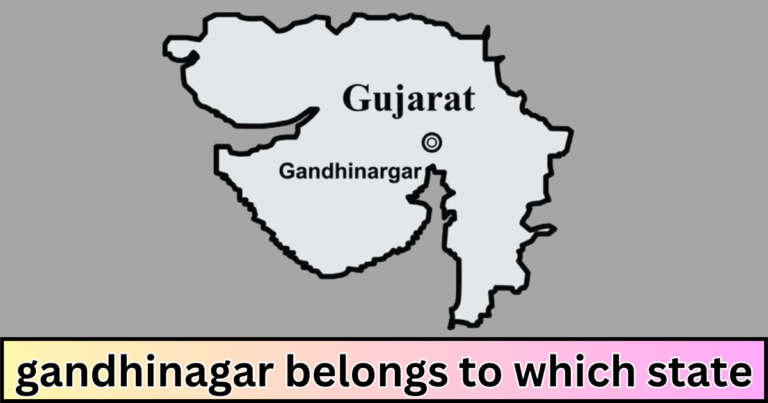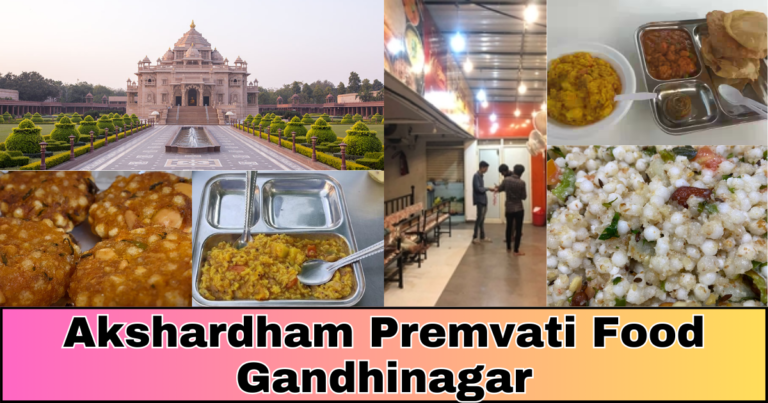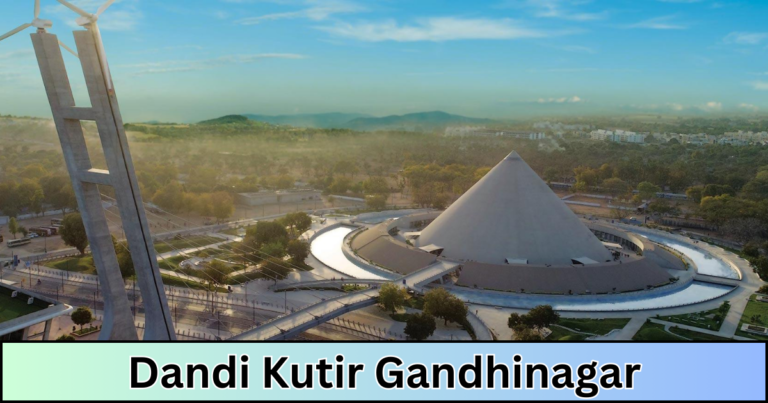History and Cultural Significance of Gandhinagar : Unveiling the Legacy
History and Cultural Significance of Gandhinagar : Calling all culture vultures and history buffs! Get ready to dive into the fascinating story of Gandhinagar, the capital of Gujarat. This meticulously planned city boasts a unique past and a vibrant present, offering a treasure trove of experiences for the curious explorer.

Background
Gandhinagar might be a young city by Indian standards, but the land it occupies whispers tales of times gone by. Before its modern avatar, the area was part of the Pethapur state, nestled beside the life-giving waters of the Sabarmati River.
Following Gujarat’s separation from Bombay state in 1960, the need for a new capital arose. Ahmedabad, the former capital, bustled with commerce and industry, making it less than ideal for administrative purposes. Thus began the exciting journey of building Gandhinagar!
The Creation of Gandhinagar
Imagine a city designed from scratch! That’s exactly what Gandhinagar is. Pioneering Indian architects, H.K. Mewada and Prakash M Apte, students of the legendary Le Corbusier, meticulously planned the city’s layout. Think wide avenues with names like ‘C’ and ‘G’ intersecting with numbered streets – a testament to their modernist vision.
The year 1960 marked the official birth of Gandhinagar. The first building’s foundation was laid in 1965, and by 1970, the area was declared the state capital. Witnessing this rapid development unfold must have been a sight to behold!
Cultural Significance
Step into Gandhinagar, and you’ll be greeted by a vibrant tapestry of Gujarati culture. The city takes immense pride in showcasing the state’s artistic heritage. Keep an eye out for exquisite wood carvings that adorn temples and monuments, a true testament to the skill of local artisans.
Another heartening aspect of Gandhinagar’s cultural landscape is its beautiful display of religious harmony. Mosques, churches, gurudwaras, Jain derasers, and of course, magnificent Hindu temples coexist peacefully, symbolizing the city’s respect for diverse faiths.
Festivals are the lifeblood of any Indian city, and Gandhinagar is no exception. Witness the colorful spectacle of Uttarayan, the kite-flying festival, or lose yourself in the joyous chaos of Holi. Gujarat Sthapana Divas, marking the state’s foundation day, is another vibrant celebration, while Vasant Utsav, the spring festival, adds a touch of floral charm to the city. During these festivities, the streets come alive with people dressed in their traditional finery, creating a visual treat.

History and Cultural Significance of Gandhinagar : A Feast for the Artistic Eye
Wander through Gandhinagar’s temples and monuments, and you’ll be mesmerized by the intricate wood carvings that adorn them. These handcrafted masterpieces stand as a testament to the talent of local artisans. But their artistry extends beyond grand structures. Look closer, and you’ll find their touch in beautiful everyday objects and utensils – a subtle reminder of the beauty that infuses daily life here.
History and Cultural Significance of Gandhinagar : A Celebration of Traditions
Festivals are the heartbeat of Gandhinagar, bringing the city alive with joyous energy. Soar into the vibrant skies during Uttarayan, the annual kite-flying festival, a spectacle of color and friendly competition.
Navratri transforms Gandhinagar into a dance floor. The rhythmic beats of Garba fill the air, joined by the graceful movements of Dandiya and the energetic Raas. Dazzling costumes, expressive faces, and the perfect synergy of rhythm and movement – Raas is a visual and cultural treat.
As the year turns, Gujarati New Year brings fresh beginnings, followed by the dazzling lights and festivities of Diwali. Holi, the festival of colors, explodes in a riotous celebration of joy and togetherness.
History and Cultural Significance of Gandhinagar : Honoring the Past, Embracing the Present
Gujarat Sthapana Divas, the state’s foundation day, is another reason to celebrate. On this day, the area around the government buildings transforms into a glittering spectacle, showcasing pride in Gujarat’s heritage.
Vasant Utsav, the spring festival, adds a touch of floral charm to the city, a vibrant counterpoint to the more energetic celebrations.
History and Cultural Significance of Gandhinagar : A Blend of Modernity and Tradition
While modern clothing dominates the city center, venture into the rural areas, and you’ll witness the timeless beauty of traditional attire. Men adorn themselves in kurtas and dhotis, while kediyas, the embroidered long-sleeved coats, add a touch of elegance. Women drape themselves in colorful chaniya cholis, the perfect attire for twirling and dancing during festivals. The finishing touch? A graceful odhni, a veil that adds a touch of mystery and elegance.
History and Cultural Significance of Gandhinagar : Conclusion
Gandhinagar is more than just a seat of government; it’s a planned city brimming with cultural significance. From its well-preserved historical roots to its enthusiastic celebration of Gujarati art, traditions, and festivals, Gandhinagar offers a unique perspective into the heart of Gujarat. So, pack your bags, embrace your inner explorer, and get ready to discover the magic of Gandhinagar!
FAQ
What is the culture of Gandhinagar?
Gandhinagar represents splendid cultural legacy of Gujarat through its significant artwork, craftsmanship and arts including wood carvings. Fine examples of wood carvings can be found in temples and monuments. The craftwork of artisans on daily-use utensils and objects.
What is special about Gandhinagar?
Gandhinagar has been named after Mahatma Gandhi, the Father of the Nation. The grand Akshardham Temple, built with 6,000 tonne of pink sandstone lies at the heart of the city and is the most prominent temple of the sect in the region.
What are the features of Gandhinagar city?
Gandhinagar has an average elevation of 81 metres (266 feet). The city sits on the banks of the Sabarmati River, in north-central-east Gujarat. The 20,543 km2 area around Gandhinagar is defined by Gujarat capital territory. Gandhinagar spans an area of 326 km2 (126 sq mi).
Who was the founder of Gandhinagar?
The new capital city was planned by Chief Architect H.K. Mewada, educated at Cornell University, and his assistant Prakash M Apte. Both Mewada, and Apte had worked as trainees under legendary architect Le Corbusier in the Chandigarh Project in the 1950s.
What is the significance of Gandhinagar Gujarat?
The capital of the state of Gujarat, Gandhinagar is famous for its hospitality and tourism. With the industrialization and commercial growth, Gandhinagar is rapidly emerging as the fasted growing city after Ahmadabad and Surat.

I’m a professional content writer. I have experience of 5+ years in copywriting & content Writing.






